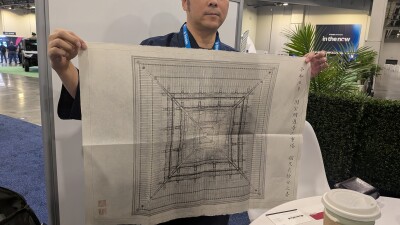The use of lidar in space is nothing new, but there are new developments happening as we speak. TriDAR is a very interesting technology developed by Neptec, for instance, that’s been used to help with docking on the International Space Station. This week comes news that ASC’s DragonEye Flash Lidar Camera has been approved for space missions going forward.
So, why is lidar useful in space? Well, it would seem that piloting things like the Space Shuttle in space isn’t the easiest thing to do in the world. Which I can believe, since I have a hard time backing a trailer into my driveway without smashing things. What Neptec’s technology does, for instance, is provide astronauts with real-time guidance information during rendezvous and docking. It automatically acquires and tracks the docking point using only knowledge about its shape, essentially creating a reliable “autopilot.”
You can grab a white paper here that explains all the details.
But what if you need some “eyes” on an object you’ve never seen before? That’s where flash lidar comes in handy (though ASC also touts an “autonomous rendezvous and docking solution,” like Neptec’s). Instead of video, which presents you with just a 2D representation of what you’re looking at, flash lidar gives you an active 3D image of what’s in front of you. Essentially, it’s a point cloud in motion.
ASC’s DragonEye captures “a full array of 128×128 independently triggered 3D range pixels per frame, up to 30 frames per second in real-time,” and lays claim to being the “first 3D FLC in space.” They have video here of the approach sequence with the International Space Station, but it’s not embeddable, so you’ll have to click through to check it out.
According to ASC, this technology can be used to create quick 3D maps of foreign terrain such as that encountered by the Mars lander by stitching together the frames acquired. I share ASC’s hope that we will see renewed interest in space exploration and that we’ll need the kind of capabilities that ASC is developing:
By providing direct, real-time measurements of the altitude of the spacecraft during descent as well as surface relative velocity and orientation, it is possible to simultaneously map the topography of the terrain below to identify landing hazards and provide localization information to be used in real-time or used later for analysis. Sloped ground, craters, rocks and surface composition are among the potential hazards that are identified by ASC’s 3D cameras meeting NASA’s stringent requirements for sensors that increase the success of EDL operations for Mars landed exploration, exploration of moons, asteroids and comet rendezvous and sample return.
Not only does that have the potential to help intrepid explorers assure themselves of as much safety as possible, but just imagine the images they’ll be able to send home.
Of course, the real question is: Will it get good pictures of the aliens? And will the images be enough proof for the crazies that think the moon landing happened in a Hollywood studio?





